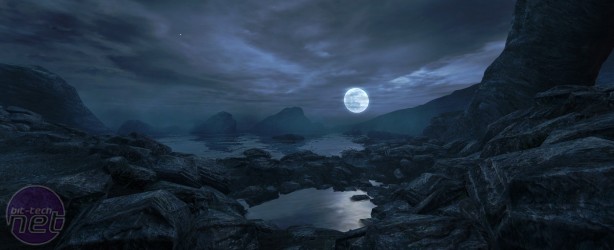
Dear Esther Review
While sorting the fictitious facts from the feverish fantasy is arguably what Dear Esther is all about though, there's more to it than that - which is vital as everyone I've spoken to has their own interpretation to share. As a piece of interactive ambience, Dear Esther has plenty of beauty and poignancy ploughed into incidental details for you to consider.The island, which like the narrator is never overtly named, is stunningly beautiful in how realistically it's been realised. While both this and the original mod version of Dear Esther were built in Valve's creaky Source engine, this newer version is a graphical masterpiece that pushes the technology to its limits over the course of four massive, immensely detailed levels. One of the single strongest arguments for Dear Esther being more artwork than game is to contrast the old and new versions and see what effect a single artist has had on the landscape.
It's more than just the detail held in the textures and the adjustments to Valve's water reflection and foliage sprites systems that makes Dear Esther so aesthetically impressive, however.
Instead, what gives Dear Esther's visuals such a poignant edge is how masterfully it extends the sense of loneliness and isolation that's conveyed in the script. The middle portion of Your Man's stroll across the island sees him wander through caverns which feel alien and Lovecraftian for their tricks of half-light and maw-like rock formations; the sensation is that of being digested by a great monster and that you'd be too far gone to help even if rescue was possible.
Jessica Curry's delicate and understated musical score achieves a similar level of excellence by weaving in a soundtrack so subtle that you often hardly notice it's there. It's the ultimate achievement of composition to have the music form such an excellent accompaniment, though this quiet success is mostly invisible until Dear Esther's crescendo at the island's highest point.
Yet, Dear Esther isn't a game without failures, with the easiest to point to coming from how unsupported the unusual structure seems to be. Pinchbeck and Briscoe may have been cautious in discussing Dear Esther's meaning throughout development, but that this carries over to the final release feels like an obvious mistake, for example. A commentary track would have been a much-appreciated way of extending Dear Esther without diluting the content within.
Similarly, while Dear Esther may not be suitable for such conventional expansions as multiplayer modes and co-op campaigns, extra content could clearly have been added in other forms - concept art galleries or samples of Pinchbeck's writings on the game. As it is, Dear Esther has but a single mode which, while pitch perfect in presentation and design, may disappoint those who'd played the previous mod version.
Still, while it's easy to complain about missed opportunities and possible expansions, it's much harder to complain about what is there. Dear Esther definitely isn't a product which everyone will appreciate - the walking-talking pace tends to polarise audiences quickly - but those who are tempted to try it out would be much advised to do so. You won't be disappointed.

-
Overall90 / 100


MSI MPG Velox 100R Chassis Review
October 14 2021 | 15:04











Want to comment? Please log in.